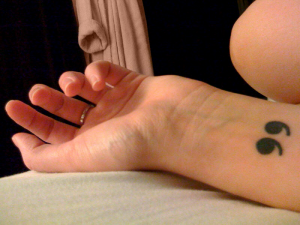The “Secret” Of Quotation Marks

Quotation marks are commonly used in our daily writing. But how are they used exactly, what do quotations marks say about the words and phrases in between? And what other grammar rules have to be kept in mind when using quotation marks?
This article will answer these questions, and more. Everything you need to know about quotation marks!
Double Quotation Marks
There is a difference between the double and the single quotation marks. Let’s have a look at the double version first. We will have a look at what are these quotation marks are used for and how they work in a sentence or text.
Quotation
Direct speech or a word-to-word quotation are usually set in between two double quotation marks. This is used in scientific articles to give a word-to-word quote of another researcher’s work. In stories and other works of fiction, these quotation marks note direct speech between characters.
Indirect speech, however, is never put in between quotation marks. Likewise, a summary of scientific research is, while marked with the according source, not written down between quotation marks.
Examples
Direct Speech: “You have to watch this movie, I am sure you’ll love it,” she said.
Indirect Speech: She told me that I have to watch this movie and that I would surely like it.
Word-to-word Quote: “This new vernacular variant is then adopted by another sub-group, the Colnard young women.” (Coates, Jennifer. Women, Men And Language. 1993)
Mention: According to Coates (1993), the Clonard young women adopted this vernacular variant as well.
Titles
Different kinds of titles are often times also set apart from the rest of a text or sentence by double quotes. Songs and Albums, movie or series titles, the names of books or TV series episodes; they are often mentioned within double quotes to show what part of the sentence belongs to the respective title and what doesn’t. This mostly applies to all kinds of works of art and media like articles, play, movies, shows, songs, paintings and the like.
Examples
Nik Kershaw’s “The Riddle” was number 3 in the UK and Ireland charts in 1984.
It was in 1931 that Salvador Dalí created his famous “The Persistence of Memory” oil painting.
Other Usage
Another purpose the quotation marks serve is to show that a term is used out of context or in an unusual way in a text. This often goes hand in hand with the dubiousness of the item in question and encourages the user to further interpret different meanings into the word.
Examples
They want to make us believe that they are “just friends”.
There is “fresh” fish on the menu today.
Other Considerations
When using quotation marks, one has to also take other grammatical rules and punctuation marks into account. These may differ for different forms of English, aka between British and American English. The rules stated here are according to the American rules.
Other punctuation marks like commas, question marks and periods should always be put inside the quotation marks.
Furthermore, the first item inside the quotations is always capitalized, even when the quote starts in the middle of a sentence.
Examples
“Nobody’s perfect,” Marcus said with a grin. “And neither am I.”
“Whenever I go there,” Carrie told me, “They treat me like a queen.”
When a quote or part of direct speech runs over several paragraphs, not each paragraph is enclosed by the double quotes. Each paragraph does indeed start with a quotation mark, but they are not closed until the whole utterance or quote is finished.
Example
He started with a festive voice. “I’ve always been a big fan of Shakespeares work, ever since I’ve been a little boy.
“Directing a play in his name is a great honor.”
Single Quotation Marks
Next to the double quotation marks, single quotes are also used. They do not serve the same purpose as double quotes and are used way less often.
When a quote appears inside a quote, single quotation marks are used. With regard to periods and commas, the same rule applies as before: they should be inside both, the single and the double quotes. Furthermore, to make it easier for the reader, it is usual to leave a white space between a single and a double quotation mark.
Example
“When I went there,” he said, still catching his breath, “There was a sign that said ‘No service today.’ “
